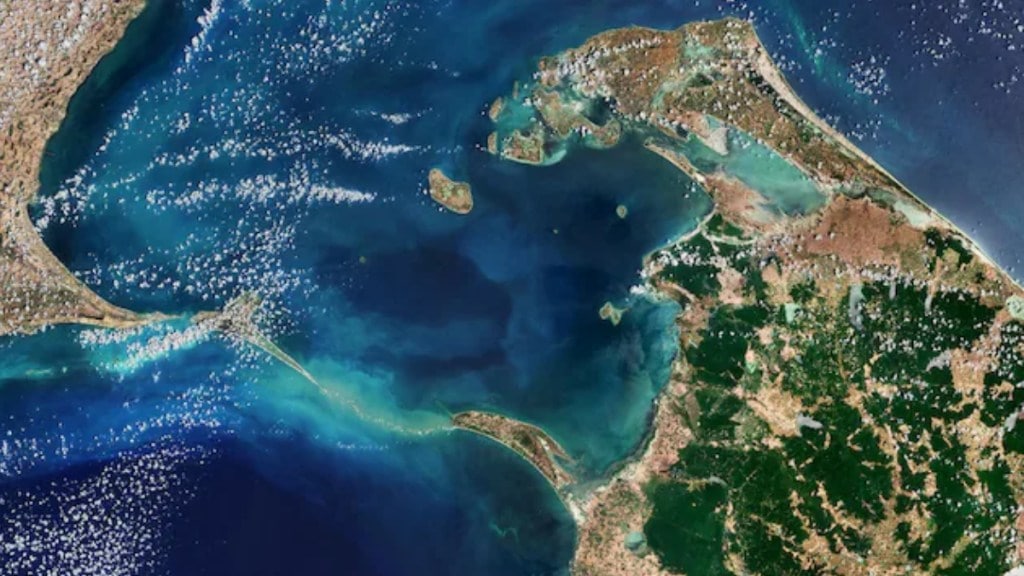The European Space Agency has released an image of the Ram Setu, also known as Adam’s Bridge, captured by its Copernicus Sentinel-2 satellite. This chain of shoals connects India and Sri Lanka.
The Ram Setu extends 48 km from Rameswaram Island off the southeastern coast of India to Mannar Island in Sri Lanka. It divides the Gulf of Mannar, an inlet of the Indian Ocean, from the Palk Strait, an inlet of the Bay of Bengal.
Geological formation of the bridge
While various theories exist regarding the formation of the bridge, geological evidence indicates that these limestone shoals are remnants of a landmass that once connected India and Sri Lanka.
Reports suggest that this “natural bridge was traversable until the 15th century, after which it was gradually eroded by storms over the years,” according to the European Space Agency.
The agency noted that some of the sandbanks are dry, while the surrounding sea is shallow, only 1-10 meters deep, as indicated by the light color of the water.
Covering about 130 square kilometers, Mannar Island is linked to mainland Sri Lanka by both a road bridge and a railway bridge, both visible at the island’s southern end.
Accessibility and ecological significance
On the Indian side, Rameswaram Island, also known as Pamban Island, is accessible via the 2-km-long Pamban Bridge. The main towns on the island are Pamban, on the western edge, and Rameswaram, approximately 10 km east of Pamban.
Both segments of the Ram Setu are part of protected national parks in their respective countries.
“The sand dunes serve as breeding grounds for birds such as the brown noddy, while numerous species of fish and seagrasses thrive in the shallow waters. Sea life around Adam’s Bridge includes dolphins, dugongs, and turtles,” added the European Space Agency.
Earlier this year, Prime Minister Narendra Modi visited Arichal Munai, the starting point of the Ram Setu.

